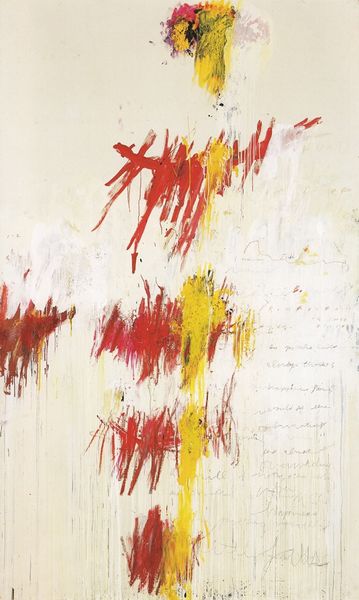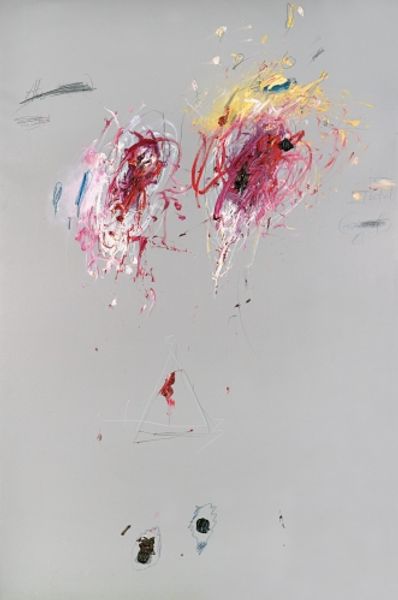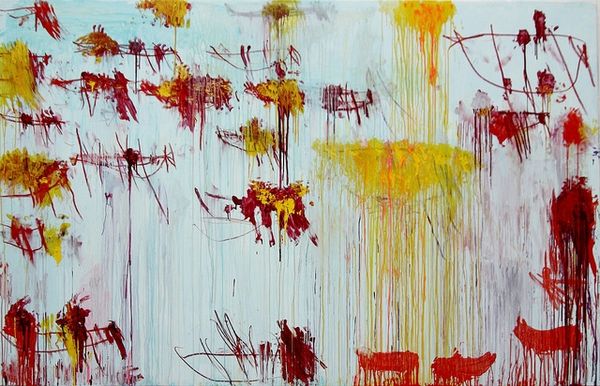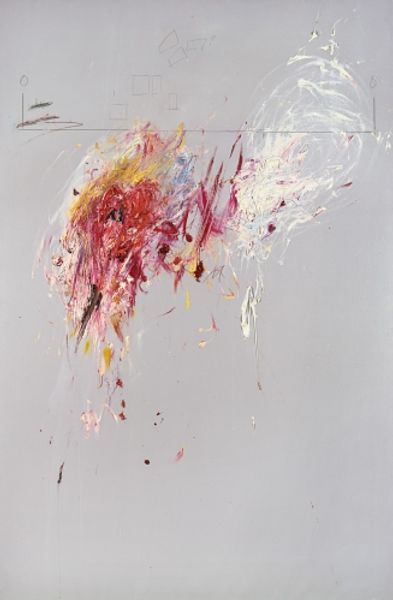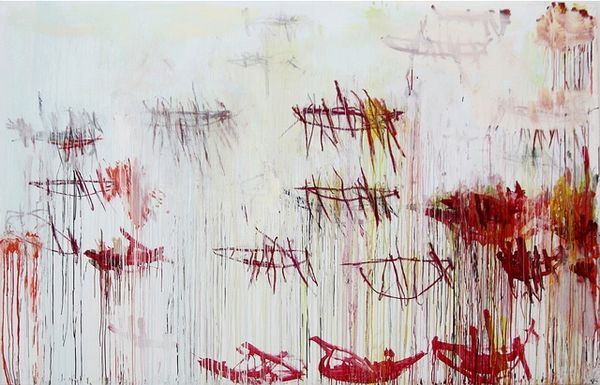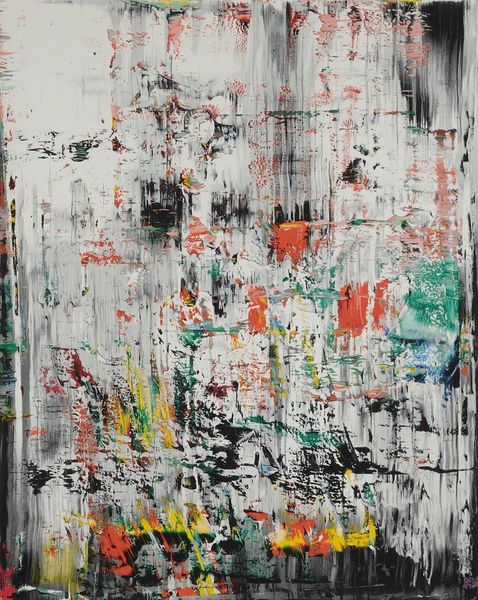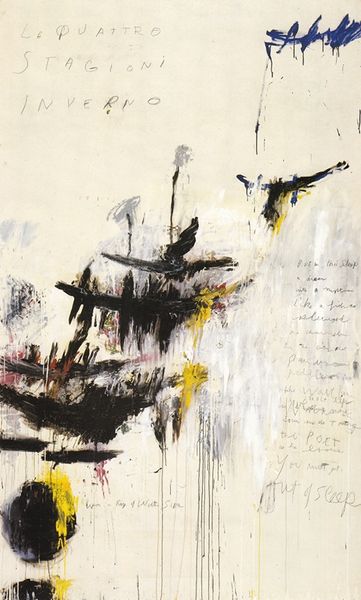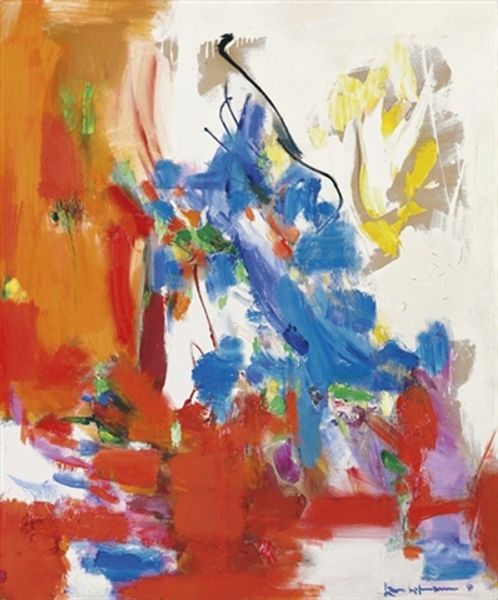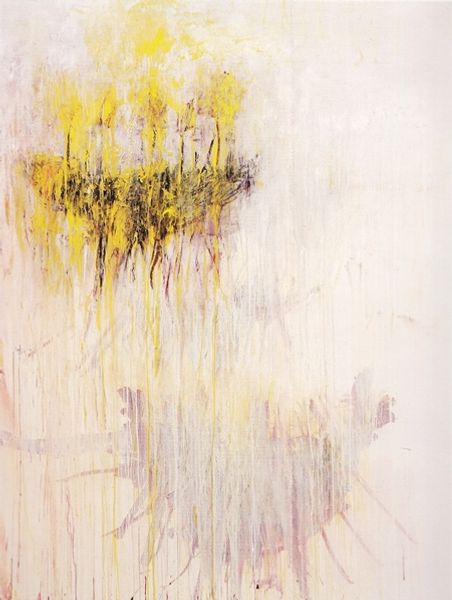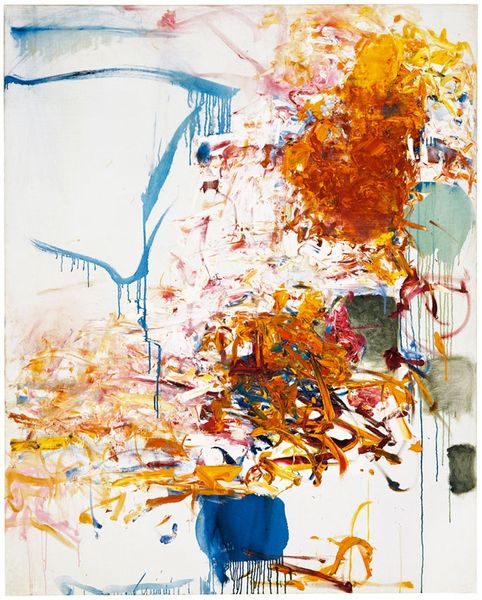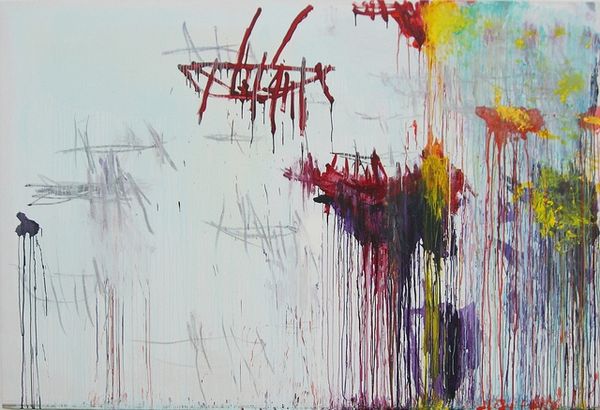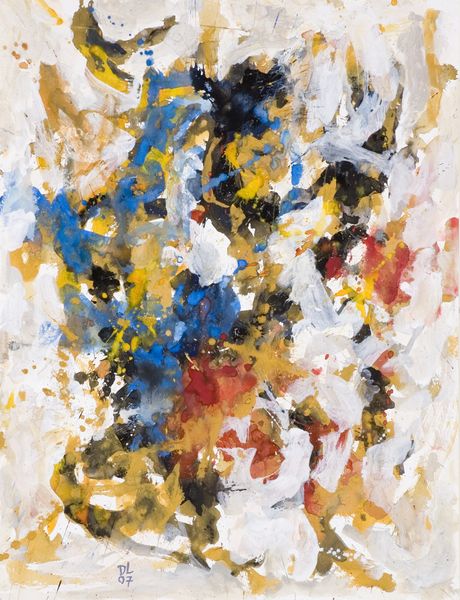
#
black-mountain-college
Copyright: Cy Twombly,Fair Use
Curator: Immediately, there's a kind of raw energy that grabs you, doesn't it? The sheer scale, the colors thrown across the canvas... Editor: We're looking at Cy Twombly's "Quattro Stagioni II. Autunno," created in 1995 and now held at Tate Britain. Twombly’s method involved a synthesis of painting, drawing, and writing. These four monumental paintings celebrate the seasons. The title here explicitly situates the artwork within a longer tradition, conjuring up, of course, Vivaldi's famous concertos. Curator: That direct inscription of 'Autunno,' almost childlike, points to something primal, ritualistic. I am more interested in the work behind its production – what kind of studio setting led to this? Was the ground prepared, the color selected by market demand or according to particular needs or resources? Editor: Well, focusing on its formal qualities, you see how Twombly layers and obscures. The canvas itself becomes a record of action, a palimpsest of marks and gestures. Those drips, for example, they disrupt any sense of illusionistic space, drawing attention to the painting as a constructed object. Curator: But the seeming 'chaos' needs situating in history: abstract expressionism freed the artists to move color in bold directions on larger scale paintings; materials that weren’t originally considered of high importance were valued by makers and collectors... And it clearly departs from Vivaldi in its themes; this work hints to me that nature must, as is necessary in industrialized societies, be ‘made’ as an object, and controlled as an instrument, which comes about by technological and chemical transformations of land. Editor: It's certainly a dynamic interplay. And consider his use of color – those deep reds, yellows... they evoke the visual sensations of autumn – ripe colors of harvest and decaying leaf. His process reveals not necessarily ‘autumn in itself,’ but also our human experience of the period. Curator: Perhaps a more accurate framing of “autumn in itself,” might be situating it amid an active production and exploitation. A view concerned more with the processes that allowed this reflection in the first place. Editor: I’m curious though—does that historical contextualization truly negate the emotional power conveyed? Curator: Not negate, illuminate! By tracing how societal resources meet a certain skill in painting we can observe in the ‘reflection’ some sense of what made that process desirable in the first place. Editor: Fair enough! It’s hard to deny Twombly's work strikes a resonant chord by channeling art with natural expression.
